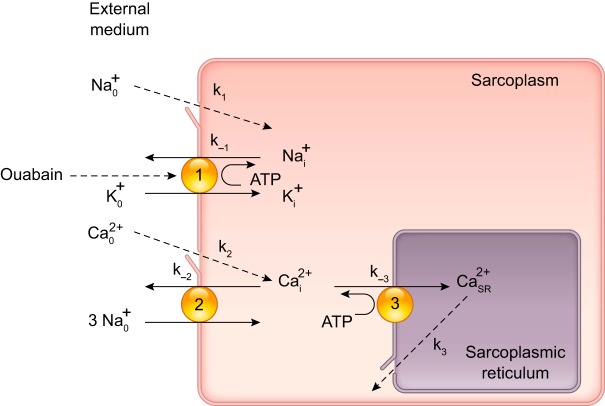Fig. 1.
Block diagram (1977 version) of Ca2+ regulation in arterial smooth muscle myocytes used to explain the hypothesis that Na+ pumps, Na+/Ca2+ exchangers (NCX) and an endogenous ouabain-like compound (OLC) help regulate myocyte Ca2+ and arterial tone (29). Some key Na+ and Ca2+ transport pathways are shown: 1) ouabain-sensitive Na+ pump; 2) NCX operating in the Ca2+ extrusion mode, although we now know that NCX usually operates in the Ca2+ entry mode in arteries with tone (31, 319); 3) sarcoplasmic reticulum (SR) Ca2+ pump (SERCA). Most of the Na+ and Ca2+ entry is through plasma membrane voltage-gated channels (k1 and k2, respectively) and Ca2+ is released from the SR through ryanodine receptors or inositol trisphosphate receptors (k3). This diagram anteceded the discovery of Na+ pump isoforms and PLasmERosomes. [Modified from Blaustein (29).]

